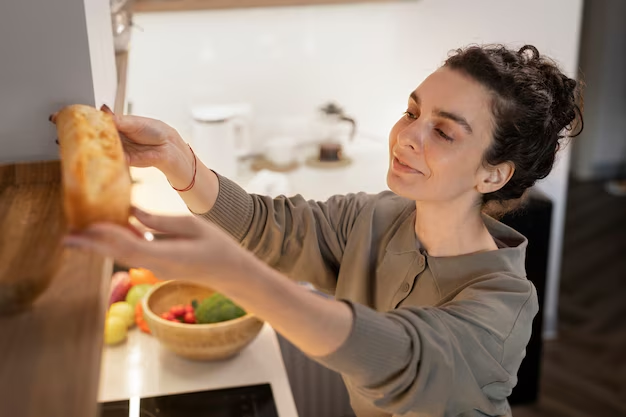Why Is My Soup Bubbling in the Refrigerator? Understanding the Mystery of the Bubbling Soup
Opening your refrigerator to grab a bowl of leftover soup only to find it bubbling can be perplexing and concerning. You might wonder if your culinary creation has become a science experiment overnight. This seemingly strange occurrence can be unsettling and might make you question whether your food is still safe to consume. In this article, we'll delve into the science behind this bubbling phenomenon, explore related kitchen conundrums, and offer practical tips to prevent it in the future. Let's get bubbling with curiosity and uncover the mysteries lurking in your fridge.
The Science of Bubbling Soup
What Causes Bubbling in Refrigerated Soup?
When soup bubbles in the refrigerator, it's not due to heat but is likely caused by fermentation or the presence of gas-forming bacteria. Here's a breakdown of key reasons:
Fermentation: If the soup contains fermentable sugars such as those found in onions, carrots, or certain beans, natural fermentation may occur. This process is surprisingly common in foods exposed to the right conditions and involves microorganisms breaking down sugars to produce gas, creating bubbles.
Bacterial Activity: Soups not stored properly can become breeding grounds for certain bacteria. If the soup was left out too long at room temperature before refrigeration, bacterial growth could initiate and continue in the fridge, generating gas as a byproduct.
Factors Contributing to Bubbling
Several factors can make your soup a bubbling candidate:
Improper Cooling: If soup isn't allowed to cool properly before refrigeration, trapped heat can create an optimal environment for bacterial growth and subsequent gas production.
Long Storage: Even in the fridge, extended storage can lead to slow fermentation or bacterial growth, especially if the fridge temperature fluctuates.
Container Sealing: A too-tight lid on a container might trap gases produced inside, resulting in visible bubbling.
Related Kitchen Conundrums
Is Bubbling Soup Safe to Eat?
Eating bubbling soup is generally not recommended. Fermentation and bacterial activity might indicate spoilage, posing potential health risks. If you notice unusual bubbles, off-putting smells, or taste changes, it's best to err on the side of caution and discard the soup.
Why Does Food Ferment in the Fridge?
Fermentation occurs in the fridge primarily due to:
Temperature: While refrigeration slows bacterial activity, it doesn't completely halt it. Prolonged exposure to fridge conditions can encourage slow fermentation.
Types of Ingredients: Foods high in sugars can ferment more readily, especially when exposed to moisture-rich environments like soups and stews.
Seeing Bubbles Elsewhere?
Sauces and Broths: Like soups, these can bubble for similar reasons—especially if made with fermentable ingredients or stored improperly.
Beverages: This often happens in homemade fruity drinks or wines undergoing fermentation.
Preventing Bubbling: Tips and Tricks
Proper Soup Storage Techniques
To keep your next batch of soup in prime condition, follow these tips:
Cool Properly: Allow hot soup to cool at room temperature for no more than two hours. Divide large quantities into smaller portions to speed up cooling.
Correct Temperature: Store soup in the main compartment of the fridge where temperature is more stable. Aim for a fridge temperature between 35-40°F (1.6-4.4°C).
Use Airtight Containers: Use good-quality airtight containers, leaving some space between the lid and contents to accommodate expansion without trapping gas.
Label and Date: Always label and date stored soups to keep track of their age and consume within three to four days.
Knowing When to Freeze
If you doubt consuming soup promptly:
Freeze It: Freezing soup can halt bacterial and fermentation activities. Use freezer-safe containers and leave space for expansion.
Thaw Safely: Thaw frozen soup in the fridge overnight or using appropriate microwave settings, and avoid refreezing thawed soup.
Visually Distinct Summary: Quick Tips for Soup Safety 🥣
- Avoid Bubbling: 🕒 Cool soups thoroughly—limit time at room temperature and refrigerate promptly.
- Check Fridge Temp: 🌡️ Maintain fridge temperature between 35-40°F.
- Use Proper Containers: 🥡 Airtight, space-allowing storage containers are key.
- Label and Date: 🏷️ Track soup age—consume within three to four days.
- Consider Freezing: ❄️ Freeze if not planning to consume soon.
Closing Thoughts: Ensuring a Bubbly-Free Experience
Discovering bubbles in your refrigerated soup might be a minor kitchen hiccup, but it serves as a vital lesson in food safety. By understanding the causes of bubbling and implementing preventive measures, you can keep your soups delicious, safe, and unbubbled. Next time you simmer a pot of your favorite recipe, you'll do so with confidence, knowing you've mastered the art of soup storage. Enjoy your culinary adventures, bubble-free!
